REDUCING EMISSIONS
The most recent update from Australia’s National Greenhouse Gas Inventory shows:
- Australia’s emissions are at their lowest levels since records began in 1990;
- Emissions are 20% lower than in 2005 (the baseline for the Paris agreement); and
- Emissions are lower now than in any year under the last Labor government.
Since 2005, Australia has reduced our emissions faster than Canada, Japan, New Zealand and the U.S.
Australia has a strong record of meeting our targets – having beaten our 2020 Kyoto target by 459 million tonnes.
We are on track to meet and beat our 2030 Paris target of reducing emissions by 26 – 28%.
On a per-person basis, that’s a reduction of 48 – 49% (on 2005 levels). This is more than France, Germany, Canada, New Zealand or Japan are expected to achieve over the same period.
The Government is committed to reducing emissions through technology, not taxes.
Our Technology Investment Roadmap prioritises investment in: hydrogen; long duration energy storage; low emissions steel and aluminium production; carbon capture and storage; and healthy soils.
This will guide $20 billion of Government investment over 10 years and support 160,000 jobs.
The Government’s $2 billion Climate Solutions Fund supports practical emissions reduction projects, like capturing methane from landfill and storing carbon in forests and soils. This will deliver an additional 100 million tonnes of emissions reduction by 2030.
RENEWABLE ENERGY INVESTMENT
In 2020, Australia had its highest ever level of deployment in renewable energy.
Australia is building wind and solar around three-times faster than Europe or the USA on a per-person basis.
Australia has the world’s highest uptake of rooftop solar, with one in four homes with rooftop solar panels.
In 2020 alone, Australia deployed more renewable energy than in the six years of the previous Labor government.
The Liberal and Nationals Government is investing in Snowy 2.0 (one of the largest pumped hydro projects in the southern hemisphere) and Tasmania’s Battery of the Nation and an interconnector.
These will store enough clean energy to power around one million homes.
We are investing in further transmission projects such as Project Energy Connect (linking SA, Victoria and NSW) and VNI West (linking Victoria and NSW).
By strengthening the grid we will enable electricity to be shifted and shared across Australia, making it more accessible and affordable.
MORE RECYCLING AND LESS WASTE
Australians create around 67 million tonnes of waste each year. We want to see less waste going to landfill and ending up in oceans, and more being re-used and recycled.
The Liberal and Nationals Government is banning the export of plastic, paper, tyres and glass waste.
In the words of the Prime Minister: “It’s our waste, it’s our responsibility”.
We are investing $1 billion and creating 10,000 jobs over 10 years, taking responsibility for our waste. This includes investing $105 million by the Morrison Government, which will leverage a total of $600 million across 77 projects.
Our plan will increase recycling rates, tackle plastic litter, improve battery recycling and halve food waste by 2030.
PROTECTING THE GREAT BARRIER REEF
The Great Barrier Reef is a global tourism icon and a wonder of the natural world. It contributes around $6.4 billion a year to Australia’s economy, supporting 64,000 jobs.
We are committed to protecting it.
In 2015, it was this Government that banned dredging in the Great Barrier Reef Marine Park.
We are investing over $2 billion in our Reef 2050 Long-Term Sustainability Plan, to improve water quality, fight crown of thorns starfish and conduct research into restoration and adaptation.
PROTECTING THREATENED SPECIES
The Threatened Species Strategy is putting vulnerable plants and animals on a better path.
For example, the numbers of orange-bellied parrots and the Norfolk Island Green Parrot have increased markedly. The network of safe havens has expanded.
More than two thirds of Australia’s threatened plant species are now stored in conservation seedbanks.
BUSHFIRE RECOVERY
The Australian Government is investing $200 million to help native wildlife and their habitats recover from the devastating impacts of the 2019-20 bushfires.
LANDCARE
Around $1 billion is being invested in Landcare between 2018 and 2023.
This includes Land Partnerships, to protect our threatened species, restore wetlands, and improve soil health on farms.
CLEANER AND GREENER COMMUNITIES
The Communities Environment Program will help to restore waterways, protect native animals, reduce litter and improve local parks.
The $100 million Environment Restoration Fund is protecting, preserving and restoring our iconic natural landscapes.
PROTECTING NATIONAL PARKS
The Morrison Government is upgrading facilities in Uluru, Kakadu, Christmas Island and Booderee National Park.
CLEANER OCEANS AND WATERWAYS
The 2021 Budget included $100 million in funding to protect our oceans, including by: increasing our Marine Park coverage to up to 45% of our oceans; restoring seagrasses mangroves and salt marshes; and supporting marine life conservation – while creating indigenous employment.
Our $100 million Environment Restoration Fund will help improve the water quality of the Yarra, Swan, Canning, Torrens, Brisbane, Georges, Hawkesbury and Nepean Rivers.
ANTARCTIC SCIENCE AND RESEARCH
The Liberal and Nationals Government is investing $2.8 billion to enhance Australia’s Antarctic operations and science capabilities. This includes funding for research, operations and a new ice breaker.
We are constructing a modern station at Macquarie Island. This will provide a year-round capability for scientific monitoring and priority research.
Information current as at September 2021
